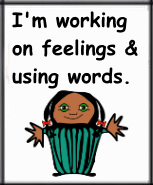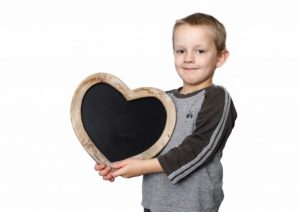Feelings and emotions for kids is proving to impact their time and achievement at school more than we realized. Kids need our support and example early. Long before kindergarten, at home, daycare, play programs, and preschool.

The following is a post from an earlier series. There is a tendency to focus on academics and think feelings and emotions for kids are less important when it’s the other way around.
********************************
The world can be a confusing place for children but sometimes emotions are a big challenge, even for adults to figure out. The early years between the ages of birth and 5 years old are the most sensitive for learning about emotions and how to control them, especially before the major event of going to kindergarten. Children’s emotions can help or hinder their learning and also impact memory. We all remember events more clearly if they we felt particularly happy or frightened.
 To support children as they learn about emotions, it’s helpful if we can name the emotions for them. When we notice that a child is very happy we can say we see they are happy. If a child is feeling out of sorts, we may have some information for them, “Your face looks very sad. Are you feeling sad because your toy broke?”For children to be able to talk about their feelings, they need to know the words. Some important ones are: happy, sad, scared, surprised, angry, silly and especially calm. How can we ask kids to calm down if they do not know what calm means?
To support children as they learn about emotions, it’s helpful if we can name the emotions for them. When we notice that a child is very happy we can say we see they are happy. If a child is feeling out of sorts, we may have some information for them, “Your face looks very sad. Are you feeling sad because your toy broke?”For children to be able to talk about their feelings, they need to know the words. Some important ones are: happy, sad, scared, surprised, angry, silly and especially calm. How can we ask kids to calm down if they do not know what calm means?
 We also need to help children figure out what another person might be feeling by looking at faces for clues. Making faces is a fun game to play, or looking at faces in picture books. Recognition of facial expressions is an important part of relationships and communication. Children’s drawings often include a mouth that is up or down depending on the emotion. More ideas are:
We also need to help children figure out what another person might be feeling by looking at faces for clues. Making faces is a fun game to play, or looking at faces in picture books. Recognition of facial expressions is an important part of relationships and communication. Children’s drawings often include a mouth that is up or down depending on the emotion. More ideas are:
- There are lots of books and stories that we can read about emotions.
- Talk about your own feelings, too. Share with your child that you are sad that a friend is sick, that you were scared when s/he fell off the table, that you wanted to holler at the bus when it left the bus stop early and you missed it.
- Sing songs like If You’re Happy and You know it.
- Turn a sock into a hand puppet and ask it how it’s feeling.
It’s important to recognize children’s efforts. “You didn’t like when the baby took your toy. I could see you felt upset. Did you just take a deep breath so you could handle it?” Other strategies are counting until the volcano feeling in the tummy goes away or going someplace quiet.

This is the biggest challenge of parenting. And, I think, for teaching. Aristotle, who was also a parent, said, “Educating the mind without educating the heart is no education at all.” How do you help your child figure out emotions?
********************************
Besides feelings and emotions for kids, this Before I Go to Kindergarten post has the rest of the infographic. You can use it as a checklist or guide for children’s early developmental milestones and readiness.
